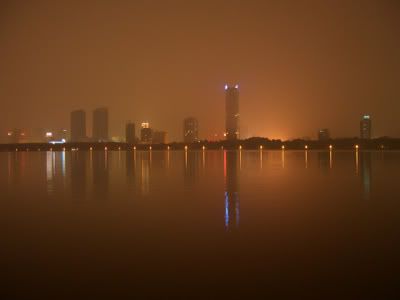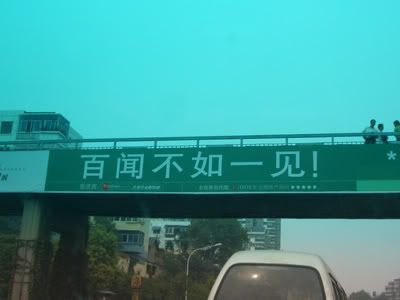
There is actually an amazing story behind the construction of the bridge. It was one of the first engineering marvel by the Chinese. It was constructed in the late 50s using Chinese designs and engineering. Given the difficulty of such a task across the impossible terrain of the river, it has also been a great source of nationalistic pride. The more recent engineering marvel undertaken by the Chinese includes the Three Gorges Dam and the Qinghai-Tibetan railroad.
The easilest way to get to the bridge is via the Da Qiao Garden (大桥公园) as recorded in the travel books. It cost 15RMB in all to get through the park and to the top of the bridge. At the side of the bridge are quotes by Chairman Mao: "Only people are the drivers of world history" This is a double-decker bridge where cars travel at the top while train lines at the first level link the two sides up.

At the ground floor of the bridge is a large statue of Chairman Mao hailing to all.
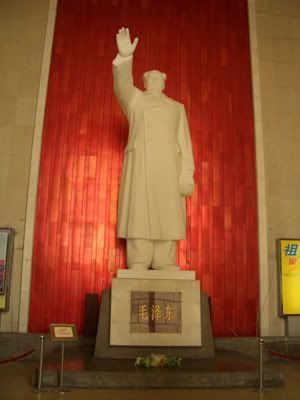
We took the lift to the '4th floor' which gives us a view of the bridge as well as the ongoing traffic. From afar, there are 2 statues (shown in the picture below), two at both end of the bridge. It shows the united and revolutionary strength of the chinese nation when the bridge is constructed.
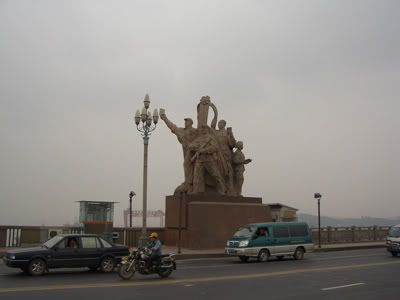
Along the bridge, there are iron paintings which visionise the future of the Chinese nation. One of such picture is capture below which shows a dam generating energy for the future.

We walked a bit down to the middle of the bridge. The Chang Jiang river is vast and is still widely used for the transportation of goods.
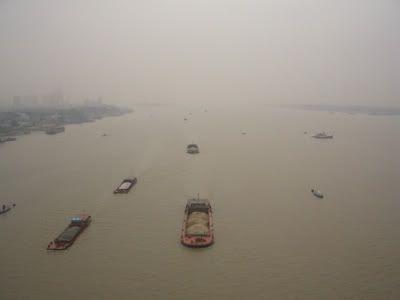
After we have taken all the shots of the Chang Jiang river, we proceeded on to our next stop, Cao Tian Gong (朝天宫). This is where the children of the officials are educated. A statue of Confucius at the entrance welcome visitors to this place of learning.

Cao Tian Gong is more of a museum dedicated to Zheng He (郑和) and city of Nanjing. In it showcase the development and history of the city over the millenniums.
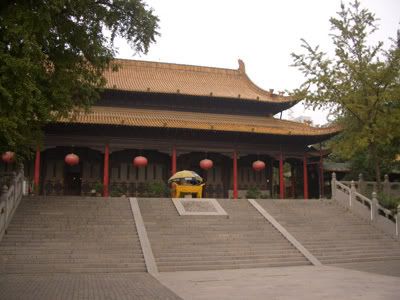
To the sides of Cao Tian Gong are markets which sell antiques and intriguing asian artifacts. It is really a 'China shop' where all kinds of ancient peripherals can be found.
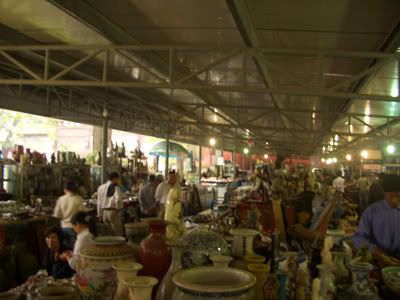
The next stop is Zhong Hua Gate (中华门) which is the largest gate in Nanjing city. This gate has been here since the Ming dynasty. There are 4 entrances to this gate, making it one of the most defensive gate in the whole city.

There are ramps at both sides of the gate which allow horses to rapidly travel to the top. I joined in one of the guardsman in their lookout.
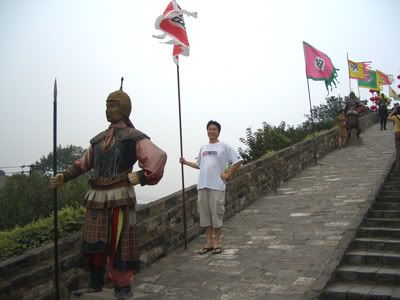
It is said that the gate can hold up to 3,000 men at the many caves. Some of the ancient defensive weapons are on showcase in there.
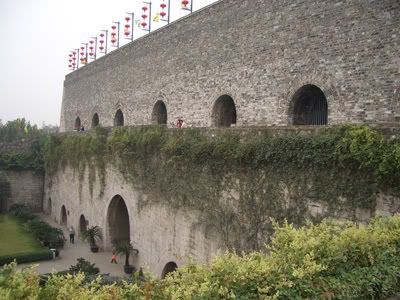
As time is running out, we have to skip the Ming Gugong (明故宫) to the east of the city. When we arrived at Fuzi Miao, it is already 5pm. The sun is setting fast and we are going on to our final day stop for the day - Fuzi Miao. Along the way, we got some snacks from the many hawkers and eateries that line the way to the temple. The unique feature of the temple is that it is surrounded by towering skyscrapers and modernity.

Here is a benevolent statue of Confucius. The incense smoke gives it a heavenly feel.
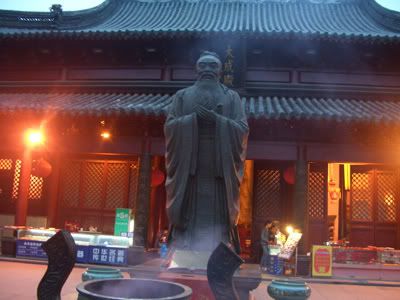
Coincidentally, a German tour group has requested for a chinese classical performance. We join in and catch the entire display. A short clip of the performance is shown below.
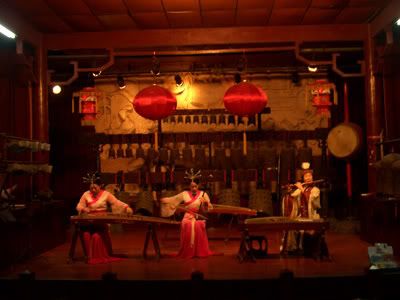
It is 6.45pm when we have finished our dinner. And our night visit has just began, this time to the modern business and shopping district at the heart of Nanjing - Xin Jie Kou (新街口). Here we have the tallest building in the area.
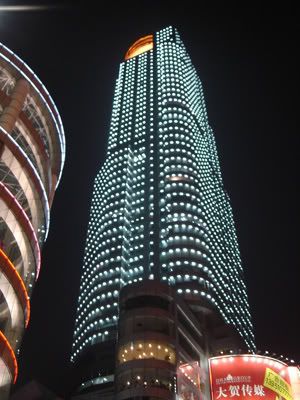
I asked the driver about the statue of Sun Zhong San at the roundabout in the middle of Xin Jie Kou which has been noted in all the travel guide books. He told me that it is no longer there. I was quite surprised! And he remarked that it has been moved 20 years ago to the Zhong San mausoleum!! Here is a photo shot of the current Xin Jie Kou roundabout.
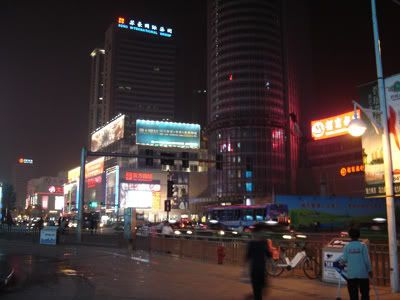
And finally we are back to the Nanjing station. It is here we sat down and reflect the skyline of the Nanjing cityscape. We cleared 5 of the 8 stops designated for the day. I guess we started a bit too late. As the sunset is getting earlier as days go by; as of this writing, the sunset time is 5.30pm. Future trips will start earlier at 6am or 7am and will end when the sun sets.
